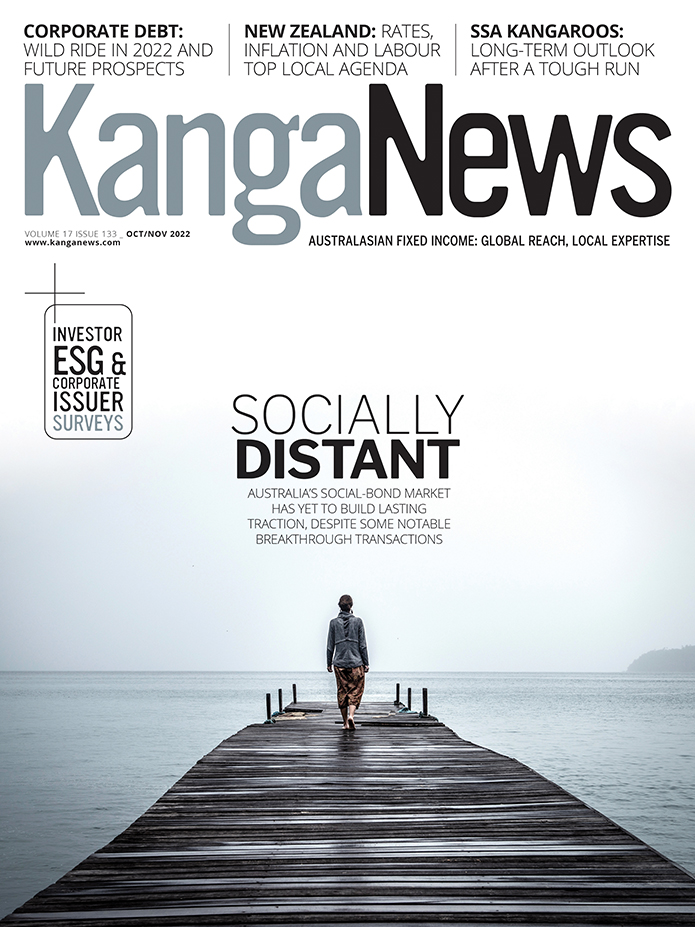Oct/Nov 2022
In this issue

In this issue
- Seeking momentum in Australian social bonds
- In depth at the KangaNews New Zealand Debt Capital Market Summit
- Australasian investor ESG survey
- Market sectors find a Q3 issuance window
- Takeouts from the Westpac-KangaNews Corporate Debt Summit
- Challenges and potential for quant trading in Australian credit
- KangaNews-Moody's Corporate Borrowers' Intentions Survey
KangaNews issues

